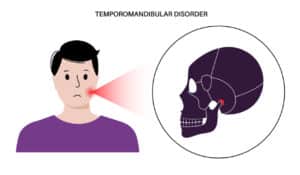Enhanced Pain Relief: Physiotherapy for Plantar Fasciitis
Plantar fasciitis is a common condition that affects many individuals, particularly those who are active or spend long periods on their feet. Understanding what plantar fasciitis is, how it develops, and how physiotherapy can help treat it is essential for effective management and recovery. This blog provides a detailed look at plantar fasciitis, its symptoms, and how physiotherapy treatments can alleviate plantar fasciitis pain.
Plantar Fasciitis: How Does It Develop?
Plantar fasciitis is an inflammation of the plantar fascia, a thick band of tissue running along the bottom of the foot, connecting the heel bone to the toes. This tissue supports the foot’s arch and absorbs shock during walking. Overuse or excessive strain can lead to inflammation, small tears, and pain.
Contributing factors include repetitive stress from activities like running or prolonged standing, improper footwear lacking support, certain foot structures like flat feet or high arches, age (more common in middle-aged individuals), and excess body weight which adds stress to the plantar fascia.
Common Symptoms of Plantar Fasciitis
The primary symptom of plantar fasciitis is pain in the heel or the bottom of the foot. This pain is usually most intense with the first steps in the morning or after periods of inactivity. Other common symptoms include:
- Stabbing Pain: Sharp, stabbing pain in the heel or along the arch of the foot, particularly after rest or prolonged sitting.
- Stiffness: Stiffness in the foot, especially in the morning or after long periods of rest.
- Swelling: Mild swelling or redness in the heel or arch area.
- Tenderness: Tenderness when pressing on the heel or arch of the foot.
- Increased Pain with Activity: Pain that worsens with prolonged standing, walking, or running, and improves with rest.
Physiotherapy Treatment for Plantar Fasciitis
Physiotherapy plays a crucial role in treating plantar fasciitis by addressing underlying causes, reducing pain, and promoting healing. Physiotherapy techniques used to treat plantar fasciitis may include:
- Stretching and Strengthening Exercises: Stretching and strengthening exercises target the calf muscles, Achilles tendon, and plantar fascia, improving flexibility, stability, and arch support.
- Manual Therapy: Includes deep tissue massage, myofascial release, and other techniques to reduce muscle tension and promote healing.
- Gait Training: Gait analysis and correction help identify and rectify abnormalities in walking and running mechanics.
- Dry Needling: Involves inserting thin needles into trigger points to relieve pain and improve muscle function.
- Shockwave Therapy: Uses sound waves to stimulate healing and reduce pain in the plantar fascia.
- Client Education: Education and advice on proper footwear, activity modification, and self-care techniques aid in managing symptoms and preventing recurrence.
By integrating these techniques, physiotherapy can effectively treat plantar fasciitis, alleviating pain, improving function, and preventing recurrence.
Physiotherapy for Plantar Fasciitis: Complementary Exercises
There are several exercises you can perform at home to complement your physiotherapy and help manage plantar fasciitis. These exercises focus on stretching and strengthening the muscles of the foot and lower leg to provide better support and reduce tension on the plantar fascia. Here are some effective at-home exercises:
- Calf Stretches: Stand facing a wall with your hands on the wall. Place one foot back with the heel on the ground and the other foot forward with the knee bent. Lean into the wall until you feel a stretch in the back leg’s calf. Hold for 20-30 seconds and repeat 3 times on each leg.
- Plantar Fascia Stretch: Sit down and cross one leg over the other. Use your hand to pull back on your toes, stretching the arch of your foot. Hold for 15-30 seconds and repeat 3 times on each foot.
- Toe Towel Scrunches: Place a towel flat on the floor and use your toes to scrunch it up. This exercise strengthens the muscles in your feet. Perform for 2-3 minutes each day.
- Marble Pickups: Place a few marbles on the floor and use your toes to pick them up and place them in a cup. This helps strengthen the small muscles in your feet.
- Rolling Stretch: Roll a frozen water bottle or a tennis ball under your foot for a few minutes. This can help massage and stretch the plantar fascia while reducing inflammation.
- Heel Raises: Stand with your feet shoulder-width apart and slowly rise up onto your toes, then lower back down. Perform 2-3 sets of 10-15 repetitions to strengthen your calf muscles.
Lifestyle Changes to Support Treatment of Plantar Fasciitis
In addition to physiotherapy and at-home exercises, certain lifestyle changes can significantly aid in the treatment and prevention of plantar fasciitis.
Wearing supportive footwear with adequate arch support and cushioning is essential, especially during prolonged standing periods. Maintaining a healthy weight through a balanced diet and regular exercise reduces stress on the plantar fascia. Engage in low-impact activities like swimming or cycling to stay fit without overstraining your feet.
Gradually increase activity levels to avoid overloading the plantar fascia. Incorporate stretching exercises to maintain flexibility in the calf muscles, Achilles tendon, and plantar fascia. Allow your feet to rest and recover, especially after high-impact activities, to avoid exacerbating the condition.
Preventing Plantar Fasciitis Recurrence
Preventing plantar fasciitis from recurring after completing physiotherapy involves maintaining the positive habits and exercises learned during treatment. Here are some strategies to help prevent recurrence:
- Continue Exercises: Keep performing the stretching and strengthening exercises recommended by your physiotherapist even after symptoms improve. Consistency is key to maintaining the benefits gained from physiotherapy.
- Monitor Activity Levels: Be mindful of your activity levels and avoid sudden increases in intensity or duration. Gradual progression helps prevent overuse injuries.
- Wear Proper Footwear: Invest in and consistently wear supportive footwear that provides adequate arch support and cushioning. Replace worn-out shoes regularly to maintain proper support.
- Stay Active: Engage in a balanced exercise routine that includes low-impact activities. Regular exercise helps maintain overall foot health and reduces the risk of recurrence.
- Listen to Your Body: Pay attention to any signs of discomfort or pain in your feet. Addressing these early can prevent them from developing into more serious issues.
- Regular Check-Ins: Schedule periodic check-ins with your physiotherapist to monitor your progress and address any concerns before they become problematic.
Optimal Foot Health for Enhanced Quality of Life
Plantar fasciitis can be a debilitating condition but with the right combination of physiotherapy, at-home exercises, and lifestyle changes, significant relief and recovery are possible. Understanding the role of these treatments and how to prevent recurrence is crucial for long-term foot health and overall well-being.If you’re experiencing plantar fasciitis, the experienced team at Vitality Physiotherapy and Wellness Centre in Ottawa is here to help. Our physiotherapists provide personalized treatment plans tailored to your needs. Contact us today to schedule your visit and say goodbye to pain for good!











